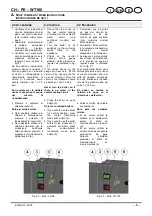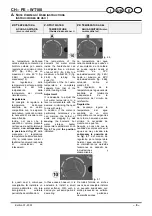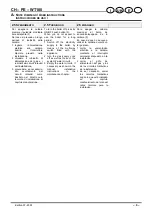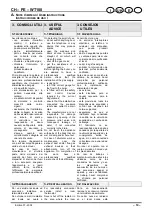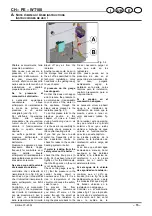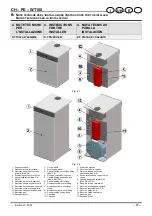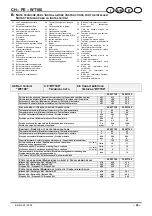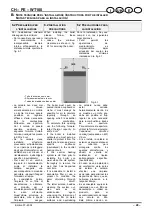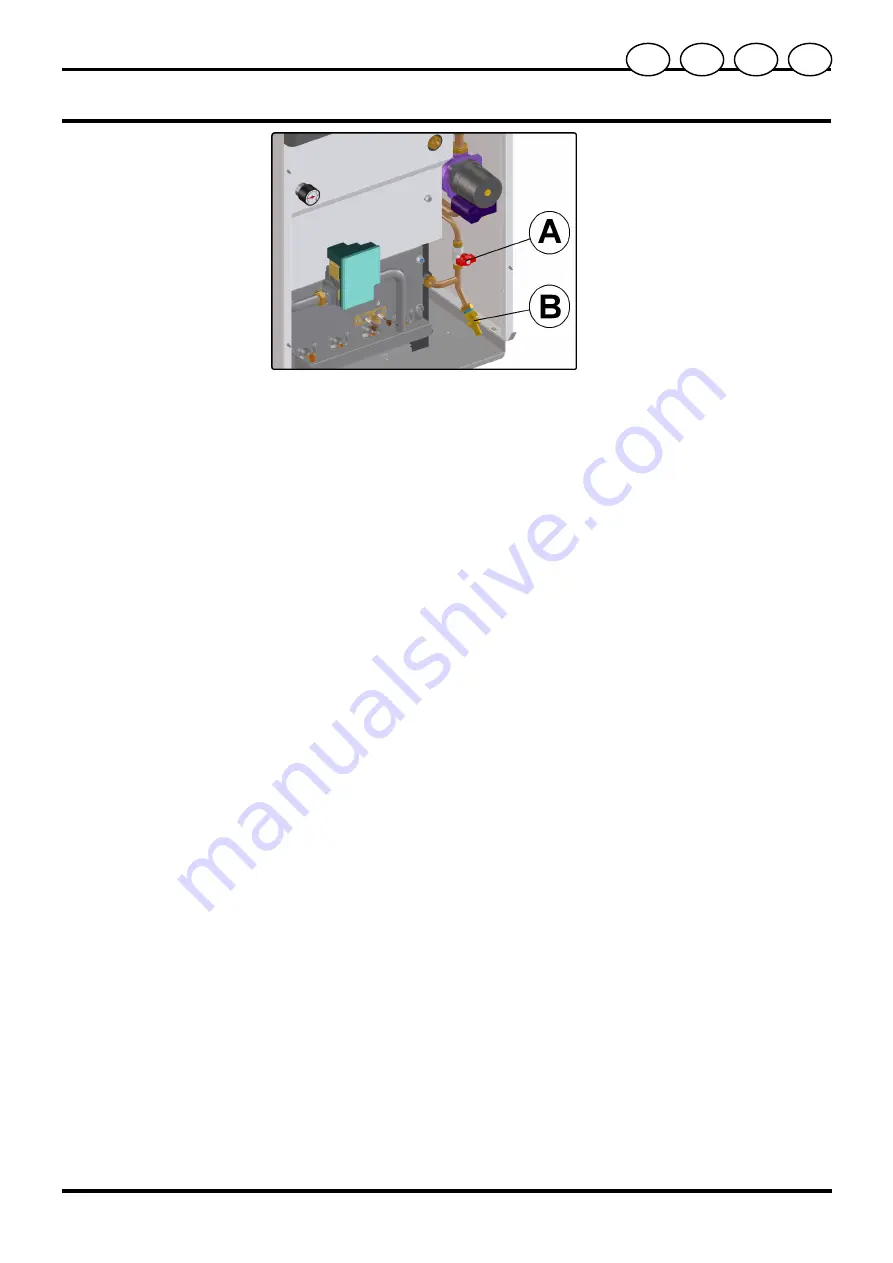
CH – PE – WT100
A-
N
OTE D
’
IMPIEGO
/ U
SER INSTRUCTIONS
I
NSTRUCCIONES DE USO
/
Edition 07–2003
– 15 –
I
UK
E
Fig. 3.4
Sfiatare eventualmente l’aria
presente nei radiatori.
Altra causa può essere la
presenza di aria nel
serpentino dell’accumulo. In
tal caso provvedere al
corretto sfiato come descritto
nella sezione
note tecniche di
installazione
al capitolo
preparazione al servizio.
Se la pressione al
manometro è diminuita...
è necessario aggiungere
nuovamente acqua
all’impianto di riscaldamento
in modo da portare la
pressione a un valore
consigliato (vedi fig. 2.1).
Per effettuare l’operazione
riferirsi alla sezione
precedente
«Se si avvertono
rumori dovuti a bolle d’aria
durante il funzionamento»
riporta in questo stesso
capitolo.
La verifica periodica della
pressione dell’impianto di
riscaldamento é a cura
dell’utente.
Qualora le aggiunte d’acqua
dovessero essere troppo
frequenti, far controllare se ci
sono perdite dovute
all’impianto di riscaldamento o
della caldaia stessa dal centro
di assistenza tecnica.
Se esce acqua dalla valvola
di sicurezza in caldaia...
controllare che il rubinetto di
riempimento (A in fig. 3.4) sia
ben chiuso, o per i modelli
CH
che il rubinetto di riempimento
posto sull’impianto non trafili
acqua.
Controllare sul manometro
(vedi fig. 2.1) che la pressione
del circuito di riscaldamento
non sia prossima a 3 bar; in
tal caso un innalzamento
della temperatura del circuito
Bleed off any air from the
radiators.
Another cause could be air in
the storage tank coil. Bleed
the air off as described in the
technical installation notes
handbook in the
getting ready
to use
chapter.
If pressure on the gauge
has dropped...
So that this does not happen
and to reduce the pressure to
a normal value, it is advisable
to vent some of the water in
the appliance through the
bleed valves present in the
radiators (see fig. 2.1).
To do this please refer to the
previous section in this
chapter
«If noise is heard
during functioning due to air
bubbles»
.
It is the user’s reponsibility to
regularly check pressure in
the central heating circuit.
If you find you have to add
water too frequently, call in
the assistance centre to
check for leaks in the central
heating system or boiler.
If water is leaking from the
safety valve on the boiler....
check that the fill-up cock (A
in fig. 3.4) has been turned off
tightly or, for the
CH
models,
that the fill-up cock on the unit
is not leaking water.
Check on the gauge (see fig.
2.1) that the pressure in the
central heating circuit is
nowhere near 3 bar; if it is a
rise in temperature of the
circuit could cause the safety
valve to open.
To prevent this from
happening we recommend
you drain off some of the
water through the small air
valves on the radiators to
bring the pressure back to the
De ser necesario, purgar el
aire que está en los
radiadores.
Otra causa puede ser la
presencia de aire en el
serpentín del acumulador. En
tal caso, purgarlo
debidamente según lo
detallado en la parte
notas
técnicas para la instalación
,
capítulo
preparación para el
funcionamiento
.
Si la presión en el
manómetro ha bajado...
es necesario volver a añadir
agua a la instalación de
calefacción de modo que la
presión vuelva a tener un
valor adecuado (véase fig.
2.1).
Para realizar esta operación,
hay que referirse al párrafo
anterior
»Si se oyen ruidos
debidos a burbujas de agua
durante el funcionamiento»
que viene en este capítulo.
La prueba periódica de la
presión de la instalación de
calefacción está a cargo del
usuario.
Si se tiene que añadir agua
demasiado a menudo, hacer
averiguar si hay pérdidas
debidas a la instalación de
calefacción o en la propia
caldera por el centro de
asistencia técnica.
Si sale agua de la válvula
de seguridad en la caldera...
controlar que el grifo de
llenado (A en la fig. 3.4) está
debidamente cerrado, o para
los modelos
CH
que del grifo
de llenado ubicado en la
instalación no salga agua.
Controlar en el manómetro
(véase fig. 2.1) que la presión
del circuito de calefacción no
es de cerca de 3 bar; en tal
caso la subida de la
Summary of Contents for 25 CH
Page 2: ......






